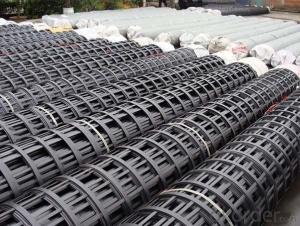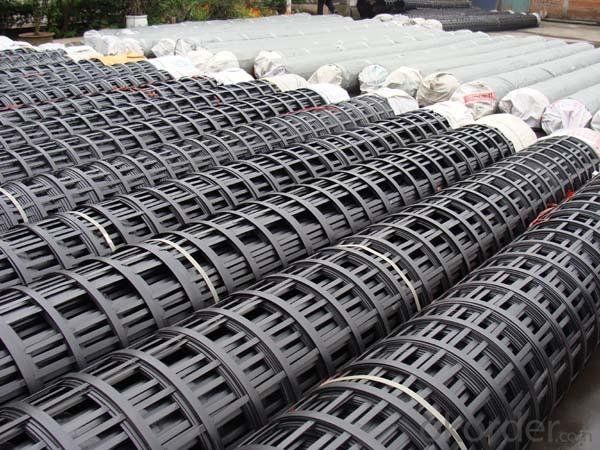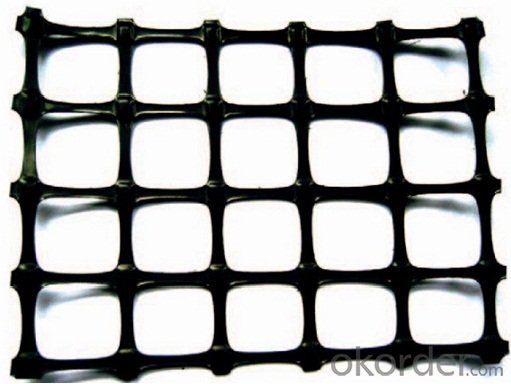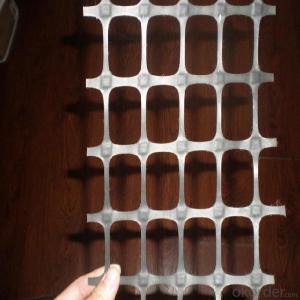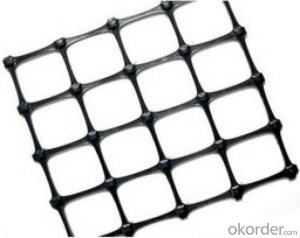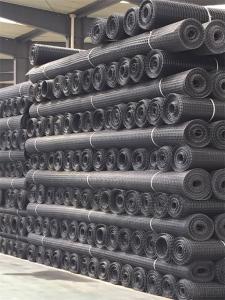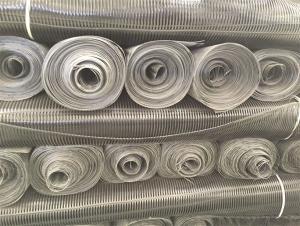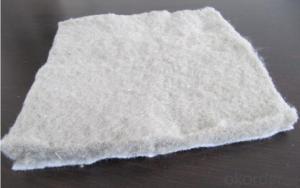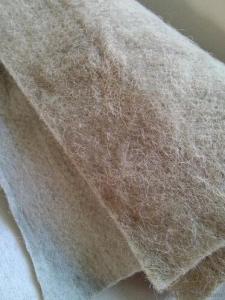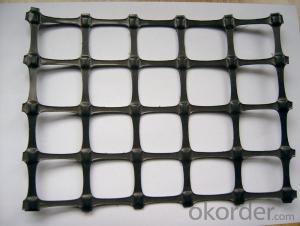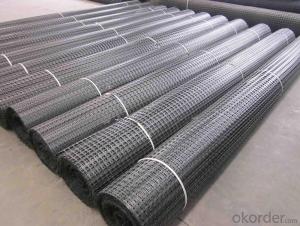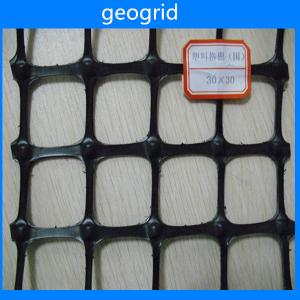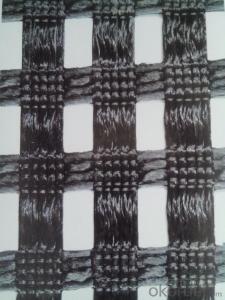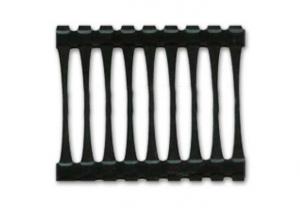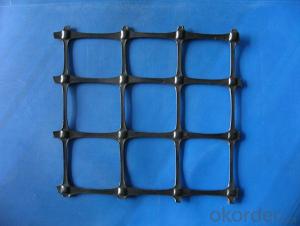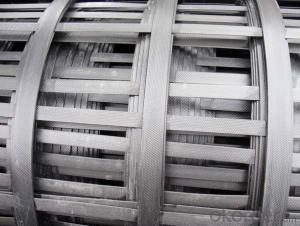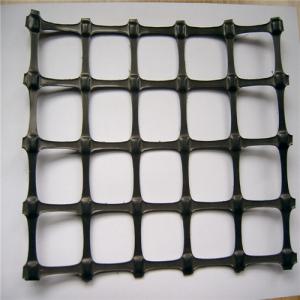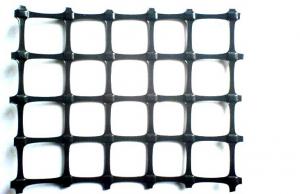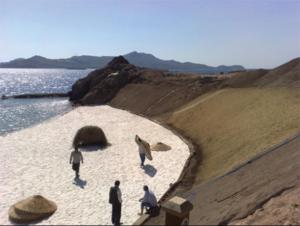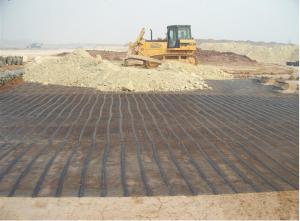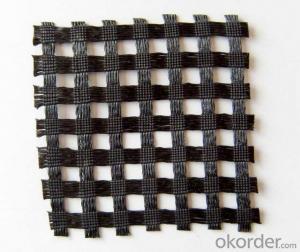Biaxial Polymer Geogrids
- Loading Port:
- China main port
- Payment Terms:
- TT OR LC
- Min Order Qty:
- 5000 m²
- Supply Capability:
- 1000000 m²/month
OKorder Service Pledge
OKorder Financial Service
You Might Also Like
Steel plastic geogrid is steel wire through the high density polyethylene wrapped into high strength the strips, welded by ultrasound, and according to the needs of the project to use different diameter and the number of steel to change with pulling force size. Through the production process to the plastic surface processing, compressed into concave and convex decorative pattern, increased the welding some strength, improve muscle with surface friction coefficient, the role of resistance to grill has resistance from the level of the packing shear, improve the bearing capacity of soft foundation soil impedance failure surface to form, meet the engineering permanent engineering requirements.
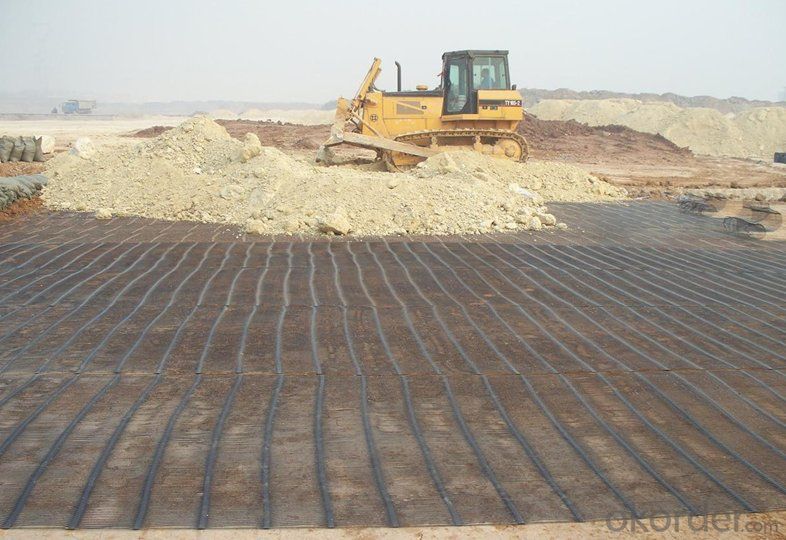
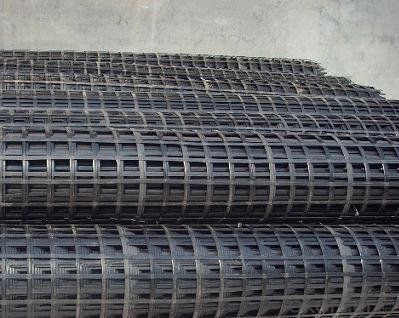
1.Intensity of vertically and horizontally from 20 KN/M to 150 KN/M
2.Low breaking elongation, not bigger than 3%
3.Suitable for each kind of soil environment
4.For treatment on surface, the rib suppresses the rough pattern, strengthens the grill surface the rough degree, enhances the GSZ steel plastic complex geogrid in the soil body friction factor.
5.It has more superior breadth, up to 2- 6 m, reducing construction joining, enhances the work efficiency.
6.High intensity, low creep and distorting
7.Resistant to erosion, longer life.
8.Easy and convenient to install, short period and low cost- saving. It can save project cost by 10%- 50%.
FAQ:
Q: Can you accept small trial order?
A: Yes, we accept small trial orders at reasonable charge.
Q:May I get one sample for checking out the quality? How much?
A: Yes, we supply sample free of charge, and the freight will be on buyer’s account, which is refundable when order confirmed.
Q: What is your MOQ?
A: Normally, 1000 m2 per order.
Q: What is your delivery time? Can we have it sooner?
A: 2 days for sample, 3-5 days against 1x40HQ
Q: What is your payment terms?
A: T/T, Paypal (3% surcharge), Western Union or 30% deposit 70% L/C.
- Q: Are geogrids environmentally friendly?
- Geogrids can be considered environmentally friendly as they are typically made from recycled materials and can be reused or recycled after their lifespan. Additionally, geogrids help stabilize soil, reduce erosion, and enhance drainage, leading to improved environmental conditions.
- Q: Soil and water conservation measures in the interim geogrid do
- The grille and grass, slope is lower than 1:0.75, multistage slope, slope height is less than 8m per level.
- Q: How many grams per square meter of 15KN Geotextiles
- The geotextile 15KN you asked for should be the tensile strength of Geotextiles
- Q: Fiberglass grille width
- Geogrid, fiberglass geogrid
- Q: What is the number of tensile elements of Geotextiles
- The number of stretching unit is mainly for the poor personal sense of woven geotextile, geogrid, geogrid or other similar loose material, the width of the tensile specimen of 1m unit number is 1m in the width of how many holes or how many lattice
- Q: Are geogrids resistant to fire?
- No, geogrids are typically not resistant to fire.
- Q: How do geogrids help in reducing the environmental impact of construction?
- Geogrids help in reducing the environmental impact of construction by providing stabilization and reinforcement to the soil, leading to a reduction in the amount of excavation and land disturbance required. This helps to minimize the need for additional resources and materials, as well as the overall carbon footprint of the construction project. Additionally, geogrids can enhance the longevity of structures, reducing the need for frequent repairs or replacements, further minimizing the environmental impact.
- Q: What are some common standards and specifications for geogrids?
- Some common standards and specifications for geogrids include the ASTM D6637 standard for uniaxial geogrids, the ASTM D6917 standard for biaxial geogrids, and the ISO 10318 standard for geosynthetics. These standards outline requirements for geogrid properties such as tensile strength, elongation, aperture size, and durability, ensuring quality and consistency in geogrid products.
- Q: What is the profit margin of the production of Geogrid
- If the product is supplied in accordance with the specifications required by the contractor
- Q: What is the recommended overlap for geogrid installation?
- The recommended overlap for geogrid installation is typically 1 to 2 feet or 30 to 60 centimeters.
Send your message to us
Biaxial Polymer Geogrids
- Loading Port:
- China main port
- Payment Terms:
- TT OR LC
- Min Order Qty:
- 5000 m²
- Supply Capability:
- 1000000 m²/month
OKorder Service Pledge
OKorder Financial Service
Similar products
Hot products
Hot Searches
Related keywords
